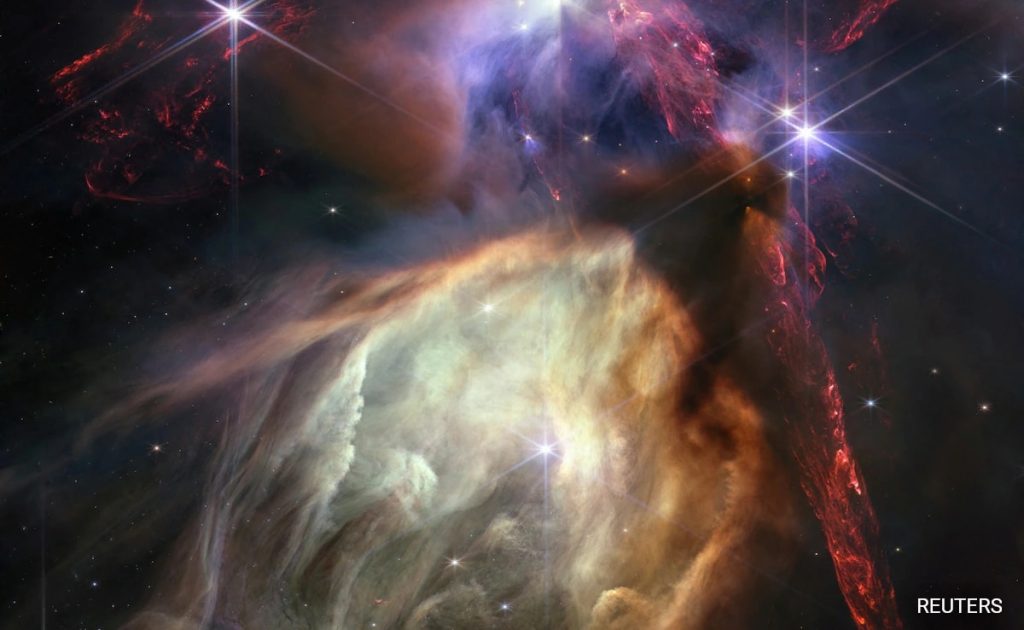NASA released two images taken by the James Webb Space Telescope on Friday that show two galaxies nicknamed The Penguin and the Egg merging in a cosmic ballet, marking two years since the US space agency published the orbiting telescope’s first scientific results.
Webb, which launches in 2021 and begins collecting data the following year, has taken stunning pictures of the cosmos while revolutionizing our understanding of the early universe. The images show two galaxies located 326 million light-years from Earth in the constellation Hydra. A light-year is the distance that light travels in one year, which is 5.9 trillion miles (9.5 trillion kilometers).
“We are observing two galaxies, each containing billions of stars, that are merging. This is a common way that galaxies like ours form over time, growing from small galaxies like the ones Webb discovered just after the Big Bang into mature galaxies like our own Milky Way,” said Jane Rigby, senior project scientist at NASA Webb.
Since it began operations, the Webb Telescope has been observing galaxies teeming with stars that formed within a few hundred million years of the Big Bang, which marked the beginning of the universe some 13.8 billion years ago.
The combined Penguin and Egg Galaxy are collectively known as Arp 142. The image shows them being held together by a haze of stars and gas as they slowly merge.
The Penguin Galaxy, so named because of its telescopic resemblance to a flightless bird, including its beak-like feature, is officially called NGC 2936. It is a spiral galaxy that is currently slightly distorted. The Egg Galaxy, so named because of its shape, is officially called NGC 2937. It is a compact elliptical galaxy. Together, they resemble penguins guarding their eggs.
According to NASA, the interaction between these galaxies began between 25 million and 75 million years ago, and they are expected to merge into a single galaxy several hundred million years from now.
Webb’s discoveries have provided insights into areas such as the formation of planets outside our solar system, known as exoplanets, and the nature of star-forming regions in the universe.
“This mission has allowed us to look back at the most distant galaxies ever seen and provide a new perspective on our understanding of the early universe,” said Mark Crumpen, head of the Astrophysics Division at NASA Headquarters. “For example, Webb’s observations show that early galaxies are more massive and luminous than expected, raising the question: How did they get so big so quickly?”
Webb is designed to be more sensitive than its predecessor, the Hubble Space Telescope, which is also still in operation: Webb will view the universe primarily in infrared light, while Hubble sees it primarily in visible and ultraviolet wavelengths.
“Webb is the largest and most powerful telescope ever launched into space. It is specialized in capturing infrared light, wavelengths longer than those visible to the human eye. Webb’s incredible sensitivity to these wavelengths has allowed us to peer into the early universe in ways no previous missions have been able to, peer through dust and gas into the hearts of star formation, and probe the composition of exoplanet atmospheres in ways never before possible,” said Crampen.
Looking to the future, Crumpen added, “Some of Webb’s most exciting research will be things we haven’t even thought of yet.”
(Except for the headline, this story has not been edited by NDTV staff and is published from a syndicated feed.)
Today’s Featured Video
Attempt to murder case against former Andhra Chief Minister Jagan Reddy


